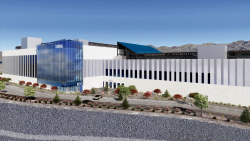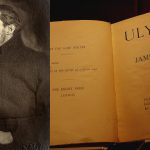The H-13’s most iconic role was as a medical evacuation (MEDEVAC) bird—famously featured as such in the opening credits of the popular long-running M*A*S*H television series.
When one thinks of warfare and helicopters, images of Vietnam come pouring in. But few people realize the helicopter really proved its worth in combat during the oft-overlooked Korean War, while the Vietnamese conflict remained in its infancy. Notably, the Bell H-13 Sioux light observation helicopter played a key role in the Korean War, revolutionizing battlefield operations and setting the stage for the helicopter’s widespread use in modern warfare.
The Bell H-13 Sioux was a military adaptation of the Bell 47, a civilian helicopter designed by Bell Helicopter in the mid-1940s. The Bell 47, which first flew in 1945, was the first helicopter certified for civilian use in the United States, showcasing a simple-yet-effective design. Powered by a single Franklin or Lycoming piston engine, the H-13 had a distinctive bubble canopy—offering excellent visibility for its two-or-three-man crew. Its lightweight frame, skid landing gear, and rotor system allowed the H-13 to operate in a diverse range of environments, from mountains to open fields, making it ideal for the Korean War’s challenging terrain.
The Bell H-13 Was the “Angel of Mercy”—and a TV Star
In the late 1940s, the US Army adopted the Bell 47 for its strategic uses, naming it after the Native American Sioux tribe, in keeping with the Army’s tradition of naming helicopters after indigenous groups. By the time the Korean War erupted in June 1950, the H-13 was still a relatively new asset in the Army’s inventory, but its capabilities quickly proved indispensable in the fast-moving and rugged conflict.
The H-13’s most iconic role was as a medical evacuation (MEDEVAC) bird—famously featured as such in the opening credits of the popular long-running M*A*S*H television series. In that role, the Sioux helicopter earned the nickname, “angel of mercy” for wounded soldiers. The helicopter’s ability to land in confined spaces and quickly transport casualties to Mobile Army Surgical Hospitals (MASH) units saved countless lives. Equipped with external “litter baskets,” the H-13 could carry one or two wounded soldiers at a time, often flying under fire to reach forward aid stations.
The MEDEVAC mission was a game-changer in military medicine. Before the advent of helicopters, wounded soldiers often faced long, grueling journeys over rough terrain to reach medical facilities, delaying critical care. The H-13 reduced evacuation times dramatically, with some casualties reaching MASH units within minutes of being wounded. The speed increased survival rates and boosted morale, as soldiers knew help was never far away.
The Helicopter Had Other Roles, Too
Beyond the MEDEVAC role, H-13 Sioux helicopters were excellent for reconnaissance and observation missions. Pilots flew low over the battlefield, scouting enemy positions, directing artillery fire, and relaying critical intelligence to ground commanders. In a war where fluid frontlines and guerrilla tactics were common, the H-13’s ability to provide real-time situational awareness was invaluable.
Because of the helicopter’s relative slow speed and its low-altitude flight compared to fixed-wing aircraft, Sioux pilots were able to spot hidden enemy movements, supply caches, and fortifications. The H-13 also served as a platform for forward air controllers who used it to coordinate air strikes and artillery barrages, enhancing the precision of UN forces fighting the North Korean military.
And the birds were frequently used for liaison and command purposes. They would ferry officers and messages between units. In the chaotic early months of the war, when North Korean forces pushed UN troops back to the Pusan Perimeter, the H-13 enabled commanders to maintain communication and control over dispersed units. Its ability to take off and land almost anywhere made it a vital tool for senior officers needing to visit the frontlines or coordinate operations across rugged terrain.
Of course—unlike the helicopters that dominated the skies over Vietnam a decade later—the H-13 Sioux was unarmored. Its bubble cockpit allowed for excellent situational awareness for the pilots, but made the bird extremely vulnerable to small-arms fire. What’s more, the H-13’s piston engine had limited power, restricting payload and range—particularly in Korea’s mountainous regions. Harsh weather, including freezing winters and monsoon rains, also tested the H-13’s reliability.
Nevertheless, the helicopter’s simplicity and ease of maintenance allowed it to remain operational in austere conditions, earning the respect of crews and ground forces alike. In spite of its downsides, this early helicopter more than proved its mettle in the Korean War, paving the way for America’s future combat helicopters.
About the Author: Brandon J. Weichert
Brandon J. Weichert, a Senior National Security Editor at The National Interest as well as a contributor at Popular Mechanics, who consults regularly with various government institutions and private organizations on geopolitical issues. Weichert’s writings have appeared in multiple publications, including the Washington Times, National Review, The American Spectator, MSN, the Asia Times, and countless others. His books include Winning Space: How America Remains a Superpower, Biohacked: China’s Race to Control Life, and The Shadow War: Iran’s Quest for Supremacy. His newest book, A Disaster of Our Own Making: How the West Lost Ukraine is available for purchase wherever books are sold. He can be followed via Twitter @WeTheBrandon.
Image: Wikimedia Commons.

















